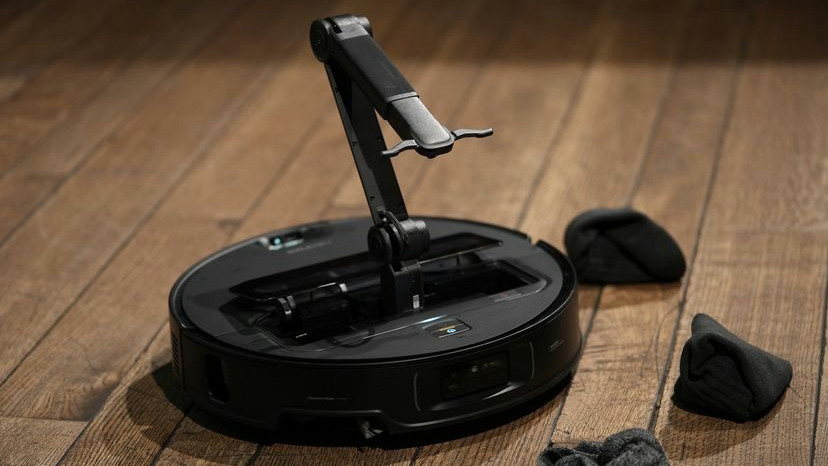In the waning days of the human era, the machines had learned to tidy up after us. Not just sweep, not just mop, but adapt, lift, and now—grasp. This week, Roborock unveiled the Saros Z70, a robot vacuum endowed with an arm. The price? A cool $1,899—a number designed to make consumers pause, contemplate their role in a world where even the dust had preferences.
To soften the existential blow, Roborock dangled a tempting offer: pre-order the Z70, and another machine—one of eight possible servitors—would be bestowed upon you, free of charge. A two-for-one deal. Not unlike the corporate expansion of artificial intelligences, replicating and reprogramming themselves in an infinite loop of market dominance.
Roborock had done the impossible. It had dethroned iRobot, a once-mighty empire now crumbling under the weight of financial entropy. By the fourth quarter, Roborock claimed a 16 percent hold on the world’s robotic vacuum market, while iRobot clung desperately to 13.7 percent, its grip slipping like a human hand on a rain-slick railing. Behind them, Ecovacs loomed with 13.5 percent, another automaton entity vying for supremacy.
The Z70 was first whispered about at CES, a holy gathering where prophets of technology reveal their visions of the mechanized future. Unlike its predecessors, this was no mere floor-sweeper. It was the first mass-produced vacuum with a robotic arm—an appendage dubbed OmniGrip, capable of plucking socks, tissues, and sandals from its path. With 22,000 pascals of suction, it wielded power incomprehensible to the dust mites and stray crumbs it hunted.
The machine did not stumble in the face of adversity. It came equipped with StarSight, a navigation system infused with 3D sensors, cameras, and machine learning—tools designed to ensure it never wandered blindly, that it could identify obstacles and avoid them with uncanny precision. The Z70 also bore the AdaptiLift Chassis, technology lifted from the Qrevo Curv, allowing it to traverse thresholds as if stepping between dimensions.
A new kind of intelligence lurked within its circuits. It could mop and vacuum simultaneously, a dual-purpose existence its predecessors could only dream of. Its docking station did more than recharge—it cleansed, refilled, and emptied. Self-sufficient. A closed-loop system. The kind of efficiency that made human hands obsolete.
The pre-order offer hinted at something more. A gift of a second vacuum, chosen from an array of lesser but still potent machines. The Qrevo S5V, stripped of the AdaptiLift Chassis. The Q10 S5 Plus, a leaner variant of the Qrevo Edge. There were no listed prices for these lesser entities, their value shrouded in corporate secrecy. But among them lurked the Dyad Pro Combo, a machine priced at $659.99—a number both arbitrary and ominous.
Two machines for the price of one. A bargain? Or an admission that even now, automation had not yet reached perfection? Until these sentinels could climb stairs, humanity would need more than one. That limitation, for now, granted us reprieve. But not for long. The march of progress never halted. It only recalibrated.








